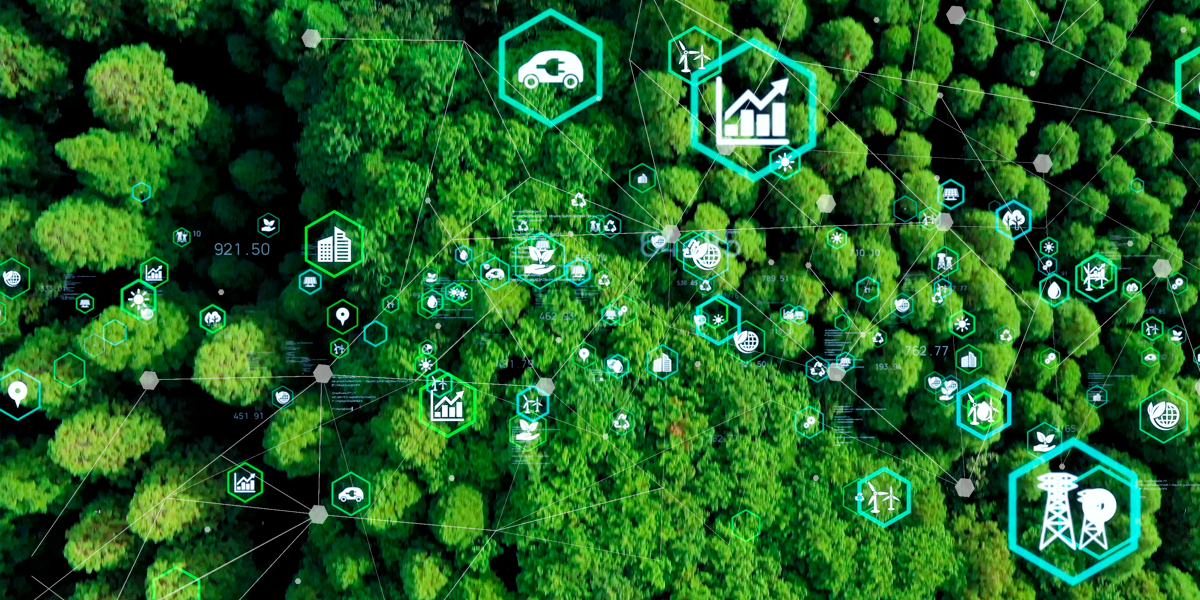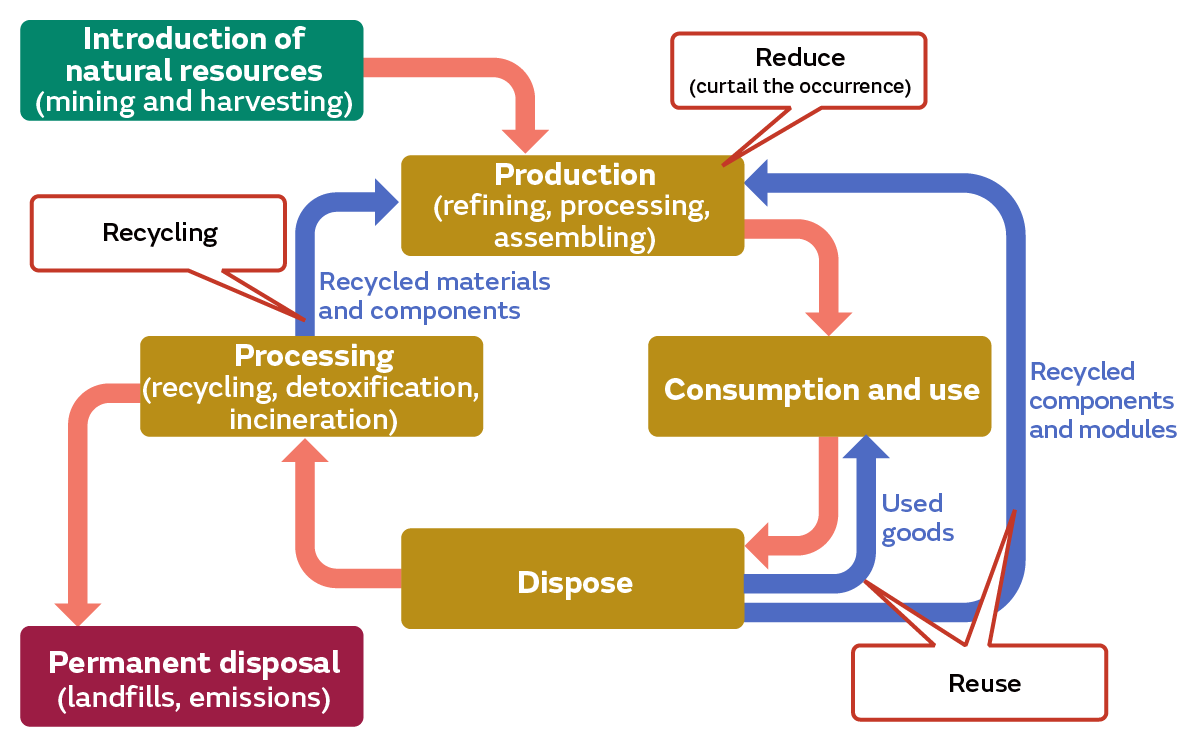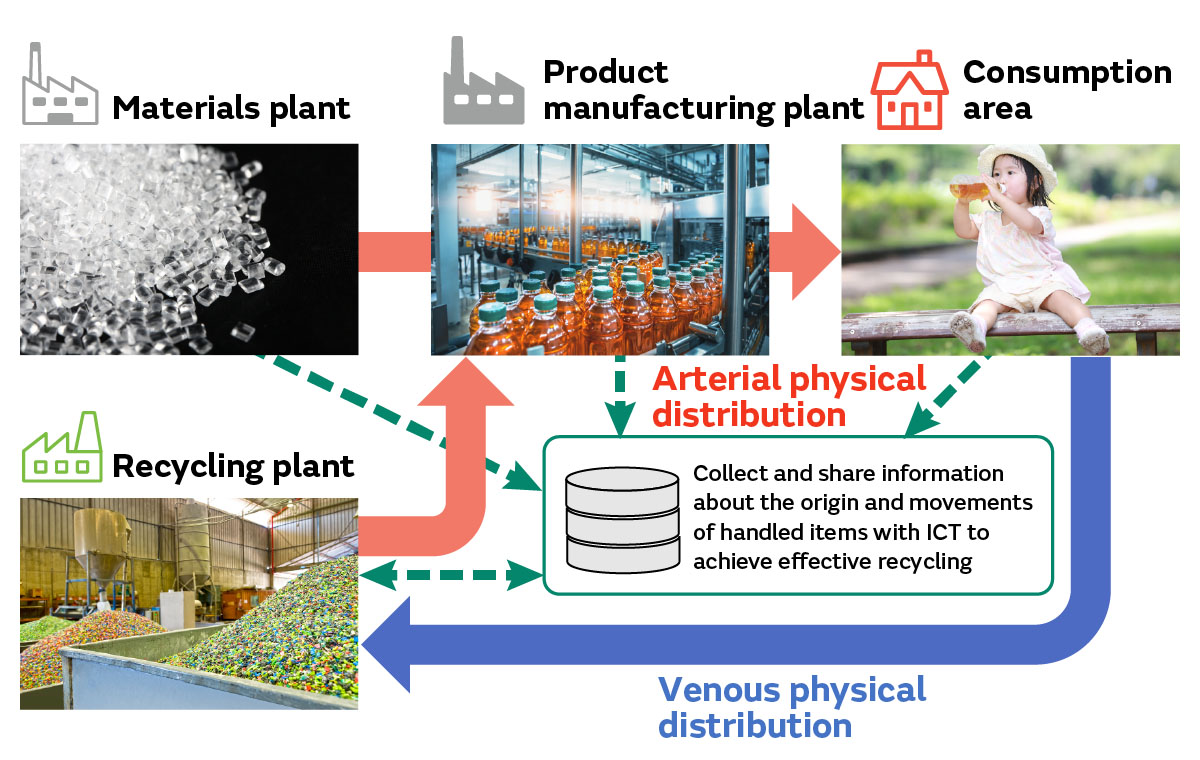RFID solution


Electronic Technology Supporting the Evolution of “Next Tech”
The Sustainable Development Goals (SDGs) advocated by the United Nations for the realization of a sustainable society include multiple goals related to environmental conservation.
Since the start of the industrial revolution in the latter half of the 18th century, humankind has harvested the materials of the natural world on a massive scale, processed them into industrial products, and consumed them in large quantities. Subsequently, a large volume of waste products was also produced due to such production and consumption. As a result, things that do not belong were dispersed in places in nature where they should not be, which is causing the environment to be destroyed. In fact, desertification due to the logging of tropical rainforests, the destruction of marine ecosystems due to microplastics*1, as well as space junk which impedes future space development, and various other effects are becoming apparent.
*1 Microplastics are plastics that are broken down to a size that is invisible to the naked eye during the process in which discarded plastic products flow into the ocean. They continue to drift in the ocean for a long time and destroy the marine ecosystem when marine organisms take the microplastics into their bodies, and there are also concerns that they may pose a risk to the health of people who eat such marine organisms.
When it comes to conservation of the global environment, people are apt to focus on the decarbonization of energy. However, such destruction of the natural environment also requires immediate measures similar to decarbonization. Moreover, the movement to utilize the latest technologies to attempt to resolve environment-related issues has become increasingly active. Here, we select non-decarbonization initiatives from within the “cleantech” technology development movement aimed at environmental conservation to focus on and describe the measures that utilize ICT (information and communications technology) in particular.

“Cleantech” is a neologism that combines the idea of restoring the natural environment to a “clean” state and “technology.” Cleantech’s aims and the scientific and technological knowledge that are applied are extremely diverse.
For example, in the case of alternative plastics, the development of materials to replace substances, which may have a negative impact on the environment if they are simply discarded, into naturally degrading substances is one cleantech initiative. Accordingly, knowledge of fields such as chemistry and materials engineering is required. Moreover, there is also a method that involves reliably separating waste that contains hazardous substances, detoxifying it, and returning it to nature. In order to put that method into practice, you need sensing technologies that sort out hazardous substances, chemistry to detoxify the substances, as well as ICT to reliably and smoothly advance the process of collecting, separating, and detoxifying the waste.
Until now, we have gathered the products that are useful for daily life and social activities from the natural world, processed them into industrial products, and skillfully used them. However, by-products during processing and waste as well as products that have served their purpose after use were discarded through methods such as “burning,” “burying,” and “discharging.” That is because it is much more difficult to competently discard something than it is to make it and because people incorrectly believe that “if they only throw away a little bit of trash, nature will not be destroyed.” However, while humanity has looked away, nature was in fact certainly being destroyed.
In order to take effective environmental conservation measures, we need to accurately assess the impact on the natural world of the processes of production, consumption and use, and disposal. There are reasons to utilize ICT here.
Generally, as perspectives to keep in mind when visualizing and optimizing information, there is the “bird’s eye” that looks at the entire picture, the “insect’s eye” that pays close attention to the details, and the “fish’s eye” that grasps the change and flow of time and state. Within environmental measures as well, information processing from a multifaceted perspective using these three types of eyes is essential. That is because there is a need to take an extensive view of society as a whole, know the status of the enormous number of items used in the world, and track their origin and movements.
For example, in order to respond to waste plastic-related issues, let us say that one company changed its plastic containers to paper containers. At first glance, it may appear to be the appropriate measure, but if paper is used as the material for new containers, the destruction of forests will advance. This cannot be said to be a proper environmental measure. Each company must take a bird’s-eye view of the supply chain for their own products and implement environmental measures. Measures from a multifaceted view cannot be accomplished with only the limited senses and cognitive abilities of humans. For that very reason, there is a need to utilize ICT with its enormous computing power.
The products obtained from nature and the industrial products that are made by processing them are essential for living an affluent lifestyle. However, in order to make affluence into something sustainable, we need to decrease the self-centered discarding of items and wasteful consumption.
As a form of the ideal social system for environmental conservation, governments around the world are now aiming to realize the “recycling society.” The recycling society refers to a society that efficiently uses limited resources to circulate them through recycling, etc. while minimizing the items that are permanently discarded without waste in the future while continuing to effectively use resources. It is believed that the recycling society will become a radical measure with respect to both the issues of environmental measures and the depletion of natural resources. In Japan, the “Basic Act on Establishing a Sound Material-Cycle Society” was officially announced in 2000, and efforts are underway to define, etc. the obligations, etc. of the nation, local public bodies, and business operators.
The recycling society concept promotes the 3Rs consisting of “reduce” to curtail the occurrence of waste, “reuse” to reuse resources, and “recycle” to recycle by adding processing (Figure 1). The EU has already adopted a law that prohibits the distribution of single-use plastics by 2021, and other specific measures are being implemented such as increasing the collection rate of plastic bottles to 90% by 2029. Moreover, there are now also companies that utilize big data and AI to analyze past market demand trends and increase forecasting accuracy to prevent the excessive procurement of raw materials and waste loss due to the production of products and reduce resource consumption.

Moreover, there is also a movement to make it mandatory for companies to perform an environmental impact assessment through the entire product and service life cycle (flow from the extraction of resources to raw material production, product production, distribution, and consumption to disposal and recycling), which is called the “Life Cycle Assessment” (LCA). In order to implement environmental measures according to the LCA, the impact on the environment must be minimized from various perspectives such as the destruction of the ozone layer, acidification, land/sea/river/atmospheric pollution, toxicity to humans, and the impact on the ecosystem, etc. The evaluation method is standardized as the “ISO 14040” and “ISO 14044” international standards for environmental management through the ISO (the International Organization for Standardization).
In addition, initiatives are also underway to create a “venous physical distribution” mechanism that collects and sorts marketed products and waste products in a flow that runs in the opposite direction of the typical supply chain to smoothly facilitate reuse and recycling. To effectively and efficiently carry out venous physical distribution, nothing will be more important than accurately assessing the origin and condition of products that appeared and were used in the market, sharing that information in society, and promoting the appropriate 3Rs (Figure 2). Therefore, the traceability to track and visualize the production, distribution, and usage processes of individual products will become important.

To ensure traceability, the utilization of technologies such as barcodes and QR codes, RFID to wirelessly write product and distribution information into semiconductor chips attached to products, as well as IoT (Internet of Things), which will connect individual products to the Internet in the future, etc., are essential. In addition, attempts are already underway to utilize the newest forms of ICT such as the blockchain*2 to track the process as a discarded product is recycled into a new product through the supply chain and the collaborative operations of companies.
*2 Blockchain is a technology that encrypts digital information that records the transaction details and process and ensures information reliability by having it supplied by many people on the Internet. In addition to being used as a technology for ensuring the value of encrypted assets, it is also applied to automated transactions using machines.
Environmental issues are social issues that are difficult to get a real sense of in daily life, but we are in a critical situation where a bright future cannot be pictured without initiatives aimed at conservation. It can be said that our bright future depends on the evolution and utilization of cleantech.